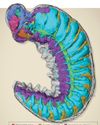
DESPITE WHAT THAT LONG-FORGOTTEN stain on your white shirt might have you believe, humans are pretty good at walking with a cup of coffee and avoiding spills, even if our success rate isn't quite 100 percent. Every time you manage to get your cup of joe from one point to another spill-free, you're intuitively completing a little-understood feat of physics: manipulating a complex object such as liquid.
That's according to a group of researchers at Arizona State University (ASU) who have been modeling the coffee-carrying phenomenon in an attempt to imbue robots with the same finesse. In a world of increasing automation, machines are expected to perform more dexterous motions, explains Brent Wallace, a Ph.D. student at ASU's School of Electrical, Computer, and Energy Engineering who was involved in the work.
“But even for simple tasks, like carrying a cup of water or a cup of coffee, the robot struggles. Every day, you and I make a cup of coffee, and 99 out of 100 days, we don't spill it on ourselves, Wallace says. “So how do we get leverage on tackling those kinds of problems? Well, let's study how humans behave in those situations. Building on prior work at Northeastern University, which found that humans have two main approaches in manipulating a complex object like a fluid, the ASU team simulated those responses, lasering in on the transition phase between the two to understand why humans exhibit a binary response-and to see how robots could learn to do the same in the future. The findings were published in the journal Physical Review Applied in late 2021.
Esta historia es de la edición May - June 2022 de Popular Mechanics.
Comience su prueba gratuita de Magzter GOLD de 7 días para acceder a miles de historias premium seleccionadas y a más de 9,000 revistas y periódicos.
Ya eres suscriptor ? Conectar
Esta historia es de la edición May - June 2022 de Popular Mechanics.
Comience su prueba gratuita de Magzter GOLD de 7 días para acceder a miles de historias premium seleccionadas y a más de 9,000 revistas y periódicos.
Ya eres suscriptor? Conectar

ONE OF THE 'GREATEST THREATS' TO THE PACIFIC NORTHWEST ISN'T WHAT YOU THINK.
EXPERTS ARE PREPARING THE REGION AGAINST THE THREAT OF DANGEROUS VOLCANIC MUDFLOWS, KNOWN AS LAHARS, WHICH COULD INUNDATE THE COMMUNITIES SURROUNDING MT. RAINIER IN AS LITTLE AS 30 MINUTES.

THE WORLD'S TOUGHEST ROW
They rowed 3,000 miles across the Atlantic, battling unpredictable weather, chaotic seas, and finicky equipment. But what they discovered gave them profound new insights into the power of the ocean.

HOW TO DIY OFF-GRID SOLAR
SPEND THE TIME UP FRONT AND PLAN IT CAREFULLY TO AVOID DISAPPOINTMENT

Are We on the Verge of an ARMS RACE in SPACE?
RUMORS OF A RUSSIAN SPACE NUKE, ALONG WITH OTHER SATELLITE-TARGETING WEAPONS, HAVE MADE GEOPOLITICAL TENSIONS EXTEND INTO ORBIT.

Fresh Fingerprints on an Ancient Statue
A CLAY FIGURINE HAS SPENT MILLENNIA incomplete, waiting at the bottom of a lake for its long-dead craftsman to finish the Iron Age-era statuette.

Quantum Entanglement in Our Brains
IT HAS LONG BEEN ARGUED THAT THE human brain is similar to a computer. But in reality, that's selling the brain pretty short.

The Tools of Copernicus
WAY BACK IN 1508, WITH ONLY LIMited tools at his disposal, Nicolaus Copernicus developed a celestial model of a heliocentric planetary system, which he described in hist landmark work De revolutionibus orbium coelestium. It was a complete overhaul of our conception of the universe-one that, unfortunately, earned him the ire of the Catholic church for decades after his death-and forever changed the way we look at the stars.

Building a Sixth-Generation Bomber Raptor
THE GLOBAL COMBAT AIR Programme (GCAP)-a project by the U.K., Italy, and Japan to develop a sixth-generation stealth fighter-has been busy at the drawing board reshaping its vision of the future of air warfare. And judging by the new concept model unveiled at this year's Farnborough air show, that future has big triangular wings.

The Electroweak Force of the Early Universe
TODAY, THE UNIVERSE AS WE KNOW IT IS governed by four fundamental forces: the strong nuclear force, the weak nuclear force, electromagnetism, and gravity.

This Ancient Fossil With a Brain and Guts
WE KNOW WHAT FOSSILS LOOK like. For example, typical dinosaur fossils are bones turned to stone and preserved from the passage of time, located, if we're particularly lucky, in large collections that can be reassembled to represent the beast they used to prop up in their entirety.